Speakers 2023
Speakers 2023
Keynote Speaker Ⅰ
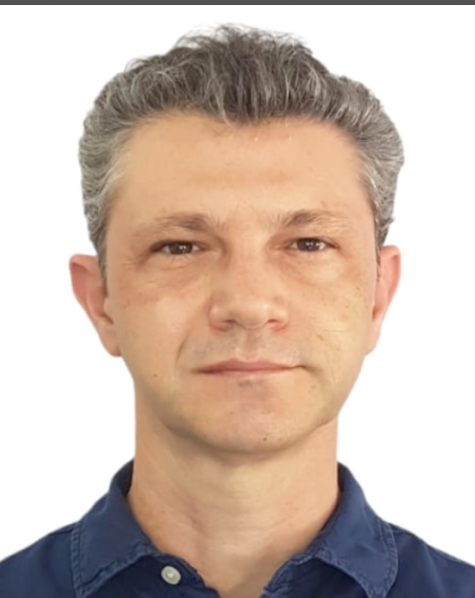
Prof. Enedir Ghisi
Federal University of Santa Catarina, Brazil
Biography Sketch: Prof. Enedir Ghisi obtained his PhD in Civil Engineering from the University of Leeds, in the UK, in 2002. He is currently a professor in the Department of Civil Engineering at the Federal University of Santa Catarina, located in Florianópolis, southern Brazil. So far, he has edited 10 books, published 14 book chapters, 166 conference articles and 157 journal articles. He has concluded the supervision of 14 PhD and 36 master's students. Currently, he supervises 10 PhD and 3 master's students. His research topics are thermal performance of buildings, energy efficiency in buildings, lighting, sustainability, building simulation, life cycle assessment, water consumption and rainwater harvesting in buildings. In studies carried out at Stanford University, in 2022 (DOI 10.17632/btchxktzyw.4,), 2021 (DOI 10.17632/btchxktzyw.3) and also in 2020 (https://doi.org/10.1371/journal.pbio.3000918) Prof. Enedir Ghisi was recognised as one of the 100,000 most influential scientists in the world for the whole career and also for 2021, 2020 and 2019.
Speech Title: Using permeable pavements to harvest stormwater for non-potable water uses in buildings
Abstract: The increase of impermeable surfaces has caused an increase in the frequency of flooding in urban centres. Such fact shows that traditional urban drainage systems are becoming outdated. Also, global warming may lead to an increase in short-term floods since there is a strong correlation between peak rainfall intensity and high temperatures. As the number of floods has been increasing, it is necessary to use new urban drainage systems, capable of restoring the natural hydrological cycle in urban centres. Permeable pavements are examples of systems that fulfil this function, by treating water locally and reducing the possibility of overloading stormwater distribution networks. The objective of the speech is to discuss and present some case studies to evaluate the use of permeable pavements to harvest stormwater for non-potable water uses in buildings.
Keynote Speaker II
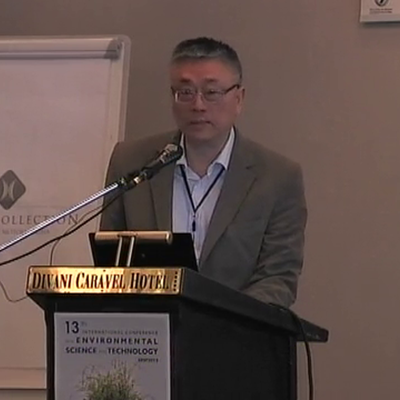
Prof. Jia-Qian Jiang
Glasgow Caledonian University
Biography Sketch: Professor Jiang has been active in water and environmental science and engineering research more than three decades. His main interest and expertise include the development and use of water treatment chemicals (adsorbent, coagulant, disinfectant, and oxidant), design and optimization of water treatment unit processes (e.g., coagulation, filtration), nutrients recovery from wastewater (e.g., phosphorus recovery), and degradation of emerging micro-pollutants in aquatic environment.
He is a member of UK EPSRC Peer Review College; a research assessor of The Carnegie Trust for Scottish Universities; a member of expert committee of EU Research for Innovation; an external PhD examiner at various universities; and an invited international research proposal assessor. As a principal investigator and a PhD supervisor, he leads and manages his research team to initiate, conduct and successfully complete various research projects. His research has resulted in a number of granted international/UK patents and journal articles and has transferred the knowledge to industries aiming at resolving their practical issues. In addition to this, his research outputs have wide impact on the academic communities (ORCID ID: https://orcid.org/0000-0003-3607-8910).
Speech Title: Safe and Clean Water for All
Abstract: Water resources are essential the core of achieving United Nations Sustainable Development Goals (UN SDGs), as they are indivisibly linked to agriculture, food security, health, etc., and ensure economic development. However, water pollution, urbanization, population growth, and climate change have placed considerable pressure on water resources. About 748 million people still do not have access to an improved source of drinking water, and water demand for industrialization is expected to increase by 400% between 2000 and 2050. This talk aims to assess the opportunities and challenges we are facing and the efforts we can make to achieve the UN SDG 6 through the technology development, global financial investment and establishing legal framework to ensure sustainable water management and enhancing and improving access to safe water supply, sanitation, and hygiene services.
Keynote Speaker Ⅲ
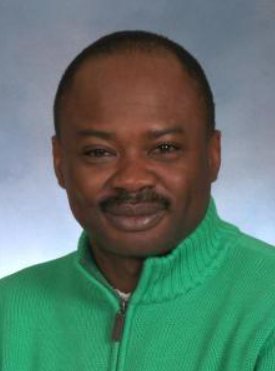
Prof. Thaddeus Chukwuemeka Ezeji
College of food, Agricultural, and Environmental Sciences, Ohio State University, USA
Biography Sketch: Dr. Thaddeus Ezeji received his PhD (Magna cum laude) in Microbiology from University of Rostock, Germany. His six years post-doctoral and Research Assistant Professor efforts at the University of Illinois, Urbana-Champaign focused on fermentation technologies and metabolic engineering of butanologenic Clostridium species. In 2007, Dr. Ezeji joined the Animal Science Department at The Ohio State University (OSU) as Assistant Professor, and currently holds a professor position. Dr. Ezeji’s current research focuses on development of non-food substrates to produce fuels and chemicals, and design of advanced fermentation systems. Additionally, Dr. Ezeji’s laboratory conducts research activities on metabolic engineering of microorganisms of biotechnological significance. In collaboration with several OSU faculty, Dr. Ezeji is involved in outreach programs that address emerging issues from Ohio’s expanding bioenergy sector. He has co-edited 3 books and published more than 80 scientific papers and 17 book chapters and serves as associate Editor for three international journals.
Speech Title: Green chemistry: A case for sustainable production of biofuels from non-food substrates
Abstract: As the reality of the finite nature of fossil derived feedstock chemicals and fuels sets in, coupled with the need to reduce greenhouse gas emissions to help slow down global warming, green chemistry, also known as sustainable chemistry, is gaining the attention of scientists, engineers, and policy makers as an area of study that holds promise in our quest for sustainable production of biobased feedstock chemicals and fuels. Successful application of green chemistry to sustainable production of feedstock chemicals and fuels is expected to provide global community energy security and help mitigate excessive greenhouse gas emissions into the environment. Biobased fuels and feedstock chemicals include but are not limited to ethanol, butanol, propanol, isopropanol, pentanol, hexanol, 2,3-butanediol, 1,3-propanediol, succinic acid, lactic acid, H2, and CH4. For this talk, however, the focus is on sustainable bioproduction of butanol. Meanwhile, food crops such as sugarcane, corn and other starchy crops are the major renewable substrates that are currently used, in enormous quantities, to produce biobased feedstock chemicals and fuels. These substrates also serve as feed for livestock and food for humans and other consumer products, which create competition and potentially drives up cost. From economic and environmental view, non-food substrates such as lignocellulosic biomass (LB) or agricultural residues, and food rejects, that are generally considered as waste with some disposal issues are considered better choices than food crops. Consequently, this talk will elaborate on rationale and significance of sustainable butanol production from non-food substrates, technologies of production, bottlenecks associated with butanol production, and strategies to advance commercial production of biobutanol.
Keynote Speaker Ⅳ
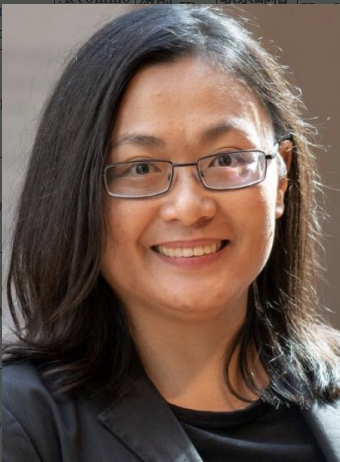
Prof. Vivian W. Y. Tam
Western Sydney University
Biography Sketch: Distinguished Professor Vivian W. Y. Tam is a world-leading researcher in the field of construction engineering and management. Her findings have found applications and impact for tackling climate-change issues for green buildings and recycled concrete. She is currently the Director of Centre for Infrastructure Engineering, Associate Dean (Research and HDR), Associate Dean (International) and Discipline Leader (Construction Management) at School of Engineering, Design and Built Environment, Western Sydney University, Australia. She was nominated to the College of Expert, Australian Research Council, Australian Government in 2018-2021. She is currently the Editor-in-Chief of International Journal of Construction Management and Senior Editor of Construction and Building Materials. She has published over 330 referred journal articles. She has been awarded fifty-three research grants (totalled over $5 million). Her work has been recognised by peers nationally and internationally, which has been exemplified by seven Australian Research Council projects and over 24,000 citations with a h-index of 81. Vivian is also named as 100,000 Top-Scientists (Top 2% Scientists) in the World for since 2017. Vivian is also nominated as a Runner Up, Scopus Researcher of the Year Award 2019, Excellence in Research Impacting a Sustainable Future, Scopus, and her team has won the Gold Award, 2021 Urban Innovation and Entrepreneurship Competition, Guangzhou International Sister-City Universities (GISU), from this project development.
Speech Title: Next Era in Recycling Concrete
Abstract: Construction and demolition waste is one of the largest contributors to landfills. Unfortunately, the utilisation of construction and demolition waste as recycled aggregate in concrete is not common. CO2 Concrete is invented by injecting CO2 into recycled aggregate for concrete applications. The overall performance of CO2 Concrete has matching performance as virgin concrete. The enhancement of CO2 Concrete alongside the consistency that the material can display provides a great deal of future value.
Keynote Speaker V
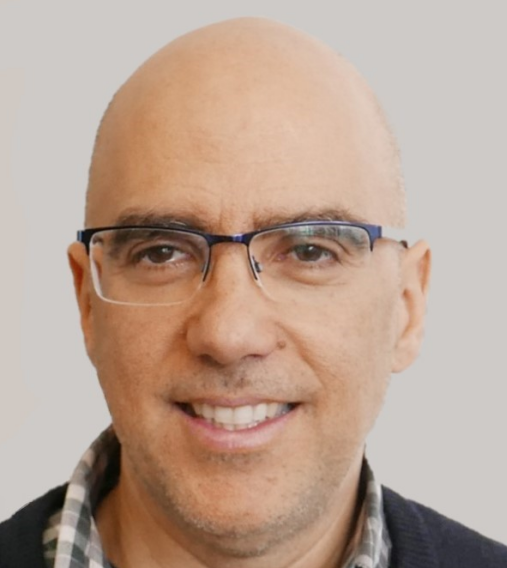
Prof. Paulo Mendonça
University of Minho, Guimarães, Portugal
Biography Sketch: Associate Professor of the Architecture School of the University of Minho (EAUM). Coordinator of the Design and Technology Research Group (2015-2018), Dean of EAUM (2011-2012) and Vice-Dean of EAUM (2010-2011). Integrated Master Studies Director (2007-2009), Architecture Graduation Director (2005-2006). PhD in Civil Engineering by the University of Minho, with the thesis: “Living under a second skin” (2005) with a FCT fellowship. He was a JNICT fellowship student in the Textile Engineer Department of the University of Minho, where he obtained the Master Degree in Design and Marketing with a thesis about “Smart Textiles in Architecture” (1997). Graduated in Architecture by the University of Porto, Portugal (1994). The main research subjects include lightweight and mixed weight buildings, low cost housing, local and global economic asymmetries, low-tech strategies, energy costs and sustainable development, new materials and technologies, recycling and reusing potentialities. Author of more than 150 publications including papers on international journals, books and book chapters.
Speech Title: Strategies for green architecture: case studies in Portugal
Abstract: The objective of this research focuses on defining appropriate strategies to accomplish green architecture fulfilling the contemporary expectations of lifestyle yet, maintaining the local identity. The construction systems of exterior walls and horizontal elements of housing buildings in Portugal are generally heavyweight. Although concrete and brick allow high thermal inertia and acoustic insulation, these materials account for almost half of Embodied Carbon (EC). Therefore, in order for sustainable building solutions, materials with lesser EC than brick and concrete should be considered. The combined use of lightweight systems with conventional building materials called mixed-weight systems can be an alternative to achieve low EC with acceptable thermal and acoustic performance as proven in previous studies from the first author. Using less material from sites or lighter systems to control emissions from transport and industrialized materials also promoting recycle and reuse, are a few strategies in the presented three case studies of housing buildings.
One such case study is located in Aveiro, a coastal town in the center of Portugal. This case study combines the traditional material from the site – Earth in walls and Wood in horizontal elements, allowing to obtain a Mixed Weight solution with EC.
The Angra do Heorísmo case study aims to reinterpret the old haystacks of the farmers, with inspired techniques from old fishermen's huts in Comporta in the Alentejo region of continental Portugal. These huts are built out of cryptomeria wood sourced from the Azores Region. The main objective of this project is to demonstrate the possibility to integrate the old thatched haystacks using vernacular methods to achieve low EE.
The last case study is an eco-cabin under construction on Terceira Island. The aim is to test some of the cabin components, and to achieve this a test cell is proposed on the Campus de Azurém of University of Minho, Guimarães.